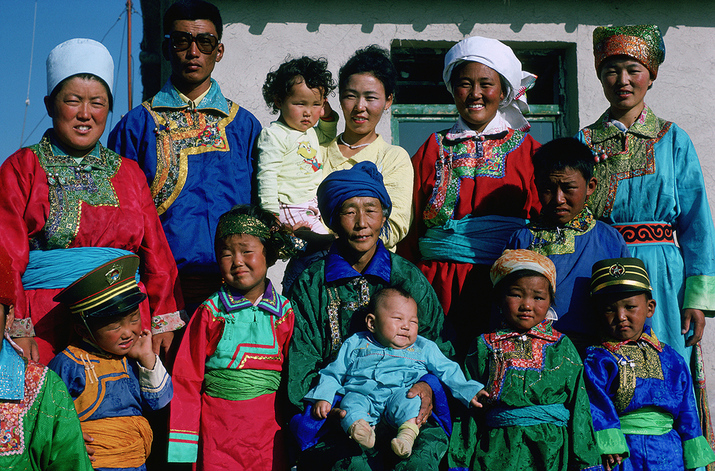-
From Current Issue
-
- Editor’s Letter Fire in the Heart
- Reviews I Gusti Ayu Kadek Murniasih
- Reviews 11th Seoul Mediacity Biennale: “One Escape at a Time”
- Dispatch Networked China
- One on One Monira Al Qadiri on Yukio Mishima
- Essays The rise of independent art spaces in pandemic-era Shanghai
- Features Tuan Andrew Nguyen
- Table of Contents
- Web Exclusives
- Archive
- Subscribe

R
E
V N
E
X
T
Installation view of ULRIKE OTTINGER’s “China. The Arts – The People, Photographs and Films from the 1980s and 1990s” at NTU Centre for Contemporary Art, Singapore (NTU CCA), 2017. Photo by Kong Chong Yew. Courtesy NTU CCA.
In her practice spanning five decades, German filmmaker and photographer Ulrike Ottinger has been no stranger to the knotted politics of representing differences. At her exhibition, “China. The Arts – The People, Photographs and Films from the 1980s and 1990s,” at the NTU Centre for Contemporary Art Singapore, not only was there the anticipated charge of oriental exoticism in viewing China and Mongolia through the Western lens, the show’s conditions of display in Singapore, a city-state entrenched in its own racial and postcolonial politics beyond Chinese diaspora, cast a dubitable shadow over the presentation. Yet, these issues are implicitly tied to the filmmaker’s provocative treatment of cultural differences, such as the theatricalization of Europe’s marginalized others in Freak Orlando (1981), or the disavowal of historical melodrama in documenting Jewish exile in Shanghai for Exile Shanghai (1997). Her films have courted these discomfiting contradictions of heterogeneity, rather than opt for simple conciliation.
ULRIKE OTTINGER, Straβe beim Trommeltor (Street at the Drum Tower), 1985, C-print, 52 × 77 cm. Courtesy the artist.
In weaving together truth and fiction, the filmmaker has defied genre expectations with her experimental documentaries that reveal the constructedness of authenticity as much as they are windows into the sights and sounds of non-Western cultures. The film Johanna d’Arc in Mongolia (1989), which was screened throughout the course of the exhibition, exemplifies the slippages of “ethnographic realism” in a baroque tale of seven Western women kidnapped by a benign band of Mongol women while travelling on the Trans-Siberian Railway. Through this collapse of worlds, the nomadic Mongolian community is gleaned to be as performative as the Western tourists, thus muddling any quest for objectivity.
Given Ottinger’s proclivity toward pastiche, the exhibition conversely felt intoned with earnestness. Immersion drove the show, as viewers were enveloped in a warmly lit interior, with walls enamored by a garland of photographs that recall the documentarian’s foray into filmmaking through painting, where scenes of ethnographic interest are given equal formal attentiveness to the quotidian. The mise en scène of street life chimes with ambient melodies of the pipa and clashing of cymbals, leaking from projections of the film China. The Arts – The People (1985). With no spatial distinction between still and moving image, the viewer’s eye is free to wander, like an inquisitive traveler’s, from one point of interest to another.
For both documentaries screened in the main exhibition, China. The Arts – The People and Taiga: A Journey to Northern Mongolia (1992), long takes and the absence of voiceover commentary cement the filmmaker’s unambiguous position as a keen, unobtrusive observer, whether in capturing the public display of everyday life in China, or documenting Mongols performing as pedagogues of their own culture.
One compelling encounter is found in the photograph Streetvendor-Photographer at the Süchbaatar Square (1991). Unlike other photographs loosely grouped around leitmotifs, this photograph is emphatically displayed on its own. The scene depicts potential customers huddled around street vendor photographers in an urban Ulaanbaatar with concrete buildings and people dressed in modern garb, offering a glimpse into pre-existing relations between the camera, the photographer and the photographed subject.
At other moments, however, the exhibition’s immersive pull struck one as overdetermined. Without the defense of ironic distance or epic storytelling, the replacement of exhibition furniture with plastic stools, carved wooden chairs or nomadic Mongolian parcels—props to signify native objects—veered too closely toward an ethnological emporium thin on critical scaffolding.
The works of Ulrike Ottinger have had a history of uneven reception since difficult questions of voyeurism, artifice and fetishism are deliberately folded into her practice; many commentators have cautioned against reactionary critique that inadvertently reconstructs stultifying binaries. With that said, the handwringing over dismissive accusations of exoticism is a dismissal of any meaningful attempt to account for these works through a postcolonial lens. These are pressing concerns since “China. The Arts – The People” is the first major exhibition of the Ottinger’s works in Asia, beyond the familiar image economies of film festivals and art institutions in Western Europe and North America. In this regard, the work of accommodating for porous and non-reductive debates remained unfinished.
ULRIKE OTTINGER, Bauchladen-Fotografen auf dem Süchbaatar Platz (Streetvendor-Photographer at the Süchbaatar Square), 1991, C-print, 52 × 77 cm. Courtesy the artist.
Ulrike Ottinger’s “China. The Arts – The People, Photographs and Films from the 1980s and 1990s” is on view at NTU Centre for Contemporary Art Singapore until August 13, 2017.
To read more of ArtAsiaPacific’s articles, visit our Digital Library.








